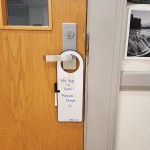As the school calendar comes to a close, schools are continuing to figure out how to answer questions around locker cleanouts, award ceremonies, graduations, and summer school. Processes and procedures that have marked the end of the year for decades are changing by the minute. The closer we get to the end of school, the more important the question of “what will next year look like?” becomes. We don’t exactly know where we will be in so many different areas; funding, student enrollment, social distancing, student needs, staff needs, and the list goes on. School leaders know they are going to have to be adaptable and responsive, and that isn’t always easy for institutions like schools.
What we can control is supporting students and families with routines, having clear support for student learning at all levels, and practicing and preaching patience. All of us have been affected by this in one way or another which makes this event different than most events in American history. It is a shared experience that has been traumatic at some level for everyone. Schools will continue to be in a unique position to take care of students, families, and staff members.
Routines have been upended for virtually every one of us. My 16-year-old sophomore went into spring break a kid who liked to golf and play soccer after school and came out of spring break a full-time grocery store worker. He has only completed the school work that was required as I am guessing most high school students around the state did. He will join students at all grade levels who participated, partially participated, or didn’t participate at all in remote learning. We worked to keep kids connected, engaged, and learning, but we in no way taught them a quarter’s worth of material. Let’s focus on the routines of school and be very thoughtful about how we will support our families in returning to them.
Schools are talking about how to differentiate learning for students. Kids are resilient, and they will be okay. But how will we meet them where they are at when they return? That is the big question. How will we have the staff to make sure we can do that effectively. Although our funding levels are set for ‘20-21, what is current year funding going to do to enrollment, will funding be slashed moving forward because of a tax base that has been heavily diminished? Will schools lose students to online schools? How will schools be creative in our support for students, make sure we have the staff needed to ensure high-density areas like lunchrooms are safe, ensure that we are able to meet the health and wellness needs of kids, all while knowing that the funding needed for this is in a precarious position.
We are going to have to find a whole new level of patience and understanding. Many of us have felt every level of emotion throughout this, and I expect it to be no different come the start of school. I hope that as schools we will work to understand where our families have been, and in return, families will be patient with teachers and schools as we make the best decisions we can. I am hopeful that this event helped us understand one another a little bit more as we focused on needs before learning. We have had a chance to talk to families and staff to just make sure they are okay. That needs to be just as important next year.
This event has defined for me why school is so important. I’ve fretted about what our community looks like without a strong school community during the closure, and I can see clearly we play a vital role in meeting both the educational and emotional needs of kids and families. I know more than ever, the teachers in the building matter. Students cannot simply be connected to online learning and learn without guidance and connection with others. Although overwhelming, I look forward to 2020-21 and using what we have learned to make school an even better place for kids, staff, and families.










Comments 2
I am doing my best to finish this last week without the distraction of next year, but it is definitely looming.
As I looked at the (small fraction) of students completing work for me still, I realize that even the ones who engaged all quarter virtually are lacking the same bench marks I am used to seeing in 9th graders in May.
This worries me for my students moving into 10th grade, and it also worries me for the new 9th graders next year. You are exactly right in your assessment that we will all need to be patient and understanding. It will be a good mantra for us all to keep going into the fall.
So many questions! Above all, I know that I miss my kids and my colleagues. I miss the daily “Good mornings” and the small conversations that come from learning collaboratively. Your district is really lucky to have an administrator like you who is looking at the human side of this crisis teaching mode.